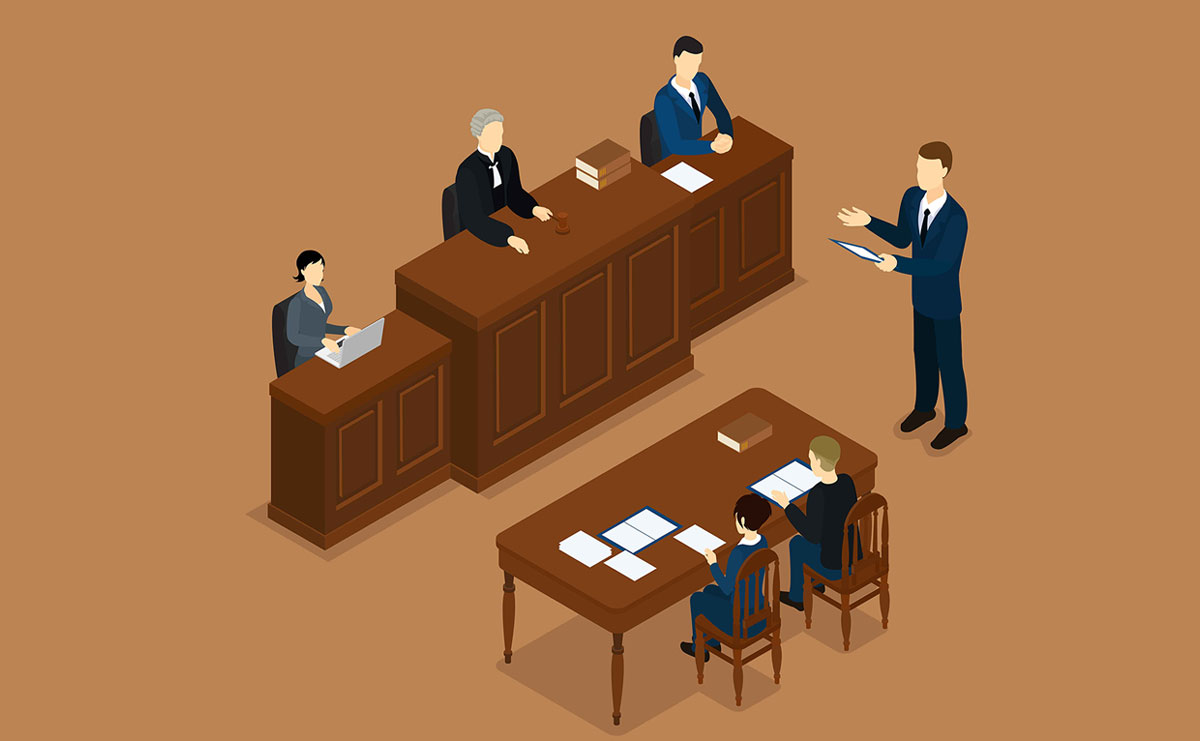Contents
Navigating Post-Trial Motions for Lawyers
Post-trial motions are critical procedural tools used by lawyers to address potential errors or issues that may have occurred during the trial. These motions, filed after the trial has concluded but before the judgment is final, can significantly impact the outcome of a case. Understanding the intricacies of post-trial motions is essential for any lawyer seeking to effectively represent their clients. They serve multiple purposes, such as requesting a new trial due to legal errors, introducing newly discovered evidence, seeking a judgment notwithstanding the verdict (JNOV), or asking the court to alter or amend the judgment based on legal or factual errors. Mastering the nuances of post-trial motions, including the appropriate timing, grounds, and procedural requirements, is vital for ensuring that a client’s rights are fully protected and that any potential avenues for relief or correction are thoroughly explored. Properly drafted post-trial motions can lead to a favorable adjustment of the court’s decision, potentially reversing an adverse outcome or mitigating its impact.
Common Types of Post-Trial Motions
Here are some common types of post-trial motions:
Motion for Judgment Notwithstanding the Verdict (JNOV)
This motion is filed by a party who contends that no reasonable jury could have reached the given verdict based on the evidence presented. If granted, the court may overturn the jury’s verdict.
Motion for a New Trial
A party may request a new trial on various grounds, such as significant errors in the trial process, jury misconduct, or newly discovered evidence that could potentially alter the outcome of the case.
Motion to Alter or Amend the Judgment
This motion seeks to correct errors in the judgment itself. It can address issues like clerical mistakes or the application of incorrect legal principles.
Motion for Relief from Judgment
Filed under specific circumstances like fraud, misrepresentation, or any other misconduct by an opposing party, this motion aims to vacate the judgment. It can also be based on newly discovered evidence that could not have been obtained during the trial.
Motion for Reconsideration
This motion asks the court to reconsider its judgment or ruling due to an oversight or a change in the law. It’s often used when a party believes the court has overlooked important facts or misapplied the law.
Motion for Remittitur
If a party believes that the damages awarded by the jury are excessive, they may file for remittitur, asking the court to reduce the amount. If the court agrees, the plaintiff may accept the reduced amount or opt for a new trial.
Motion for Additur
Conversely, if a party believes the damages awarded are insufficient, they may file for additur, requesting the court to increase the amount. Similar to remittitur, the defendant must agree to the increased amount or face a new trial.
Motion to Stay the Judgment
This motion requests a temporary halt to the enforcement of the judgment pending the outcome of an appeal or other post-trial motions. It helps prevent the potential injustice of enforcing a judgment that might later be reversed.
These motions play a crucial role in the judicial process, offering avenues to correct errors, ensure fair treatment, and maintain the integrity of the legal system. Understanding and effectively utilizing these post-trial motions can significantly impact the final outcome of a case.
Strategic Consideration in Post-Trial Motions
Post-trial motions are a critical component of the litigation process, providing a pathway to rectify potential errors or seek further relief after a trial has concluded. Properly utilizing these motions can significantly impact the outcome of a case, making it essential for legal practitioners to understand their strategic application.
Timing
Post-trial motions must be filed within a specific time frame, typically ranging from 10 to 30 days after the judgment is entered. Adhering to these deadlines is crucial, as missing the window can result in the loss of the right to file the motion. Attorneys should mark these deadlines immediately after the judgment is entered and ensure that all necessary documents are prepared well in advance to avoid any last-minute issues.
Grounds for Motion
The basis for a post-trial motion must be solid and well-supported. Common grounds for such motions include legal errors made by the court, newly discovered evidence, jury misconduct, or other issues that could have affected the trial’s outcome. The motion must clearly articulate these grounds, supported by relevant legal standards and case law.
Comprehensive Review
Conduct a thorough review of the trial transcript and evidence to identify potential errors or grounds for a post-trial motion. This includes examining jury instructions, rulings on evidence, and any procedural irregularities. Having a detailed understanding of the trial record is essential to craft a compelling argument.
Collaboration
Work closely with your legal team, including paralegals and other attorneys, to gather insights and perspectives that might reveal additional grounds for the motion. Collaboration ensures a more robust and comprehensive approach to identifying and arguing errors.
Anticipating Opposition
Prepare for the possibility of opposition from the opposing party. Anticipate their arguments and address potential counterpoints within your motion. This proactive approach can strengthen your position and demonstrate thorough preparation to the court.
Oral Argument
Be prepared to present and argue your post-trial motion orally, if required. Practice your oral argument, focusing on the most compelling points, and be ready to answer questions from the judge. Effective oral advocacy can reinforce the written motion and persuade the court to grant relief.
Drafting Post-Trial Motions
Drafting post-trial motions involves several key steps and considerations to ensure that the motion is clear, well-argued, and complies with procedural rules. Post-trial motions can serve various purposes, including requesting a new trial, altering or amending a judgment, or seeking relief from the judgment. Review the relevant procedural rules when drafting post-trial motions. If the case is in federal court, for example, consult the Federal Rules of Civil Procedure, specifically Rules 50, 52, 59, and 60. For cases in state court, refer to the applicable state rules of civil procedure.
To draft an effective post-trial motion follow these steps and considerations:
- Caption and Title: Include the court name, parties involved, case number, and judge’s name. Clearly state the type of motion, e.g., “Defendant’s Motion for a New Trial.”
- Introduction: Briefly explain the purpose of the motion and specify the judgment or order you seek to address.
- Statement of Facts: Provide a concise summary of relevant facts from the trial and emphasize facts that support the grounds for your motion.
- Legal Arguments: Clearly state the legal grounds for your motion (e.g., errors of law, newly discovered evidence), cite the relevant statutes, case law, and procedural rules, and explain how the law applies to the facts of your case, supporting your arguments with evidence from the trial record.
- Conclusion: Clearly state the specific relief you are requesting (e.g., a new trial, amended judgment) and then include your signature, printed name, address, phone number, and email.
- Certificate of Service: Attach a certificate of service showing that you have served the motion on all parties involved.
- Supporting Documents: Attach any affidavits, exhibits, or other supporting documents that bolster your motion. In complex cases, include a memorandum of law that provides a detailed legal analysis.
- Filing and Serving: Submit your motion to the court clerk’s office. Ensure that all parties in the case receive a copy of the motion.
By following this structure and paying attention to detail, you can draft a persuasive post-trial motion that effectively communicates your arguments to the court.
Ethical Considerations in Filing Post-Trial Motions
Attorneys must navigate post-trial motions with a commitment to ethical principles to ensure justice and uphold the integrity of the legal profession.
- Duty of Competence: Attorneys must possess the necessary knowledge and skill to effectively handle post-trial motions. This includes being well-versed in procedural rules, understanding the grounds for various motions, and being able to present compelling arguments.
- Duty of Diligence: Lawyers must act with reasonable diligence and promptness in filing post-trial motions. This involves timely filing within the prescribed deadlines and thoroughly preparing the motions to ensure all relevant issues are adequately addressed.
- Candor to the Tribunal: Attorneys are obligated to be truthful and forthright in their dealings with the court. This includes accurately representing the facts, avoiding frivolous arguments, and not misleading the court about the law or facts of the case.
- Avoidance of Frivolous Motions: Lawyers must not file motions that have no legal basis or are intended merely to delay proceedings. Frivolous motions can waste judicial resources and undermine the integrity of the legal process.
- Client Communication: Attorneys must keep their clients informed about the progress and implications of post-trial motions. Clients should be made aware of the likelihood of success, potential costs, and the strategic reasons behind filing or not filing certain motions.
- Grounds for Filing Motions: Ensure that motions for new trials or judgments as a matter of law are based on solid evidence and legal principles. Avoid stretching the facts or law to fit the desired outcome. When filing motions based on newly discovered evidence, verify that the evidence genuinely meets the criteria and was not discoverable with reasonable diligence before or during the trial.
- Avoiding Misuse of Motions: Do not use post-trial motions solely as a tactic to delay the execution of judgment. Such practices can harm the opposing party and reflect poorly on the legal profession. Ensure that motions are not filed to harass or intimidate the opposing party. The goal should always be to seek justice and not to burden the opponent unnecessarily.
- Professional Judgment: Provide clients with honest assessments of their chances of success. If a motion is unlikely to succeed, explain the reasons and potential consequences. While advocating for the client’s interests, balance this with the broader obligation to the court and legal system. Sometimes, it might be in the client’s best interest to refrain from filing certain motions.
Ethical considerations in filing post-trial motions are integral to maintaining the integrity of the legal profession and ensuring justice is served. Attorneys must balance their duty to zealously advocate for their clients with their obligations to the court and the broader legal system. By adhering to ethical principles and diligently preparing post-trial motions, lawyers can contribute to a fair and just legal process.
Summary
Post-trial motions are indispensable tools in the litigation process, offering crucial opportunities to rectify potential trial errors, introduce new evidence, or seek further judicial review. Mastery of these motions, from their strategic timing to the grounds on which they are based, is essential for lawyers aiming to safeguard their clients’ rights and interests. Through diligent preparation, collaboration, and ethical practice, attorneys can effectively navigate the complexities of post-trial motions, ensuring a thorough exploration of all avenues for relief. By doing so, they not only advocate for their clients but also uphold the integrity and fairness of the legal system.
Disclaimer: The content provided on this blog is for informational purposes only and does not constitute legal, financial, or professional advice.







